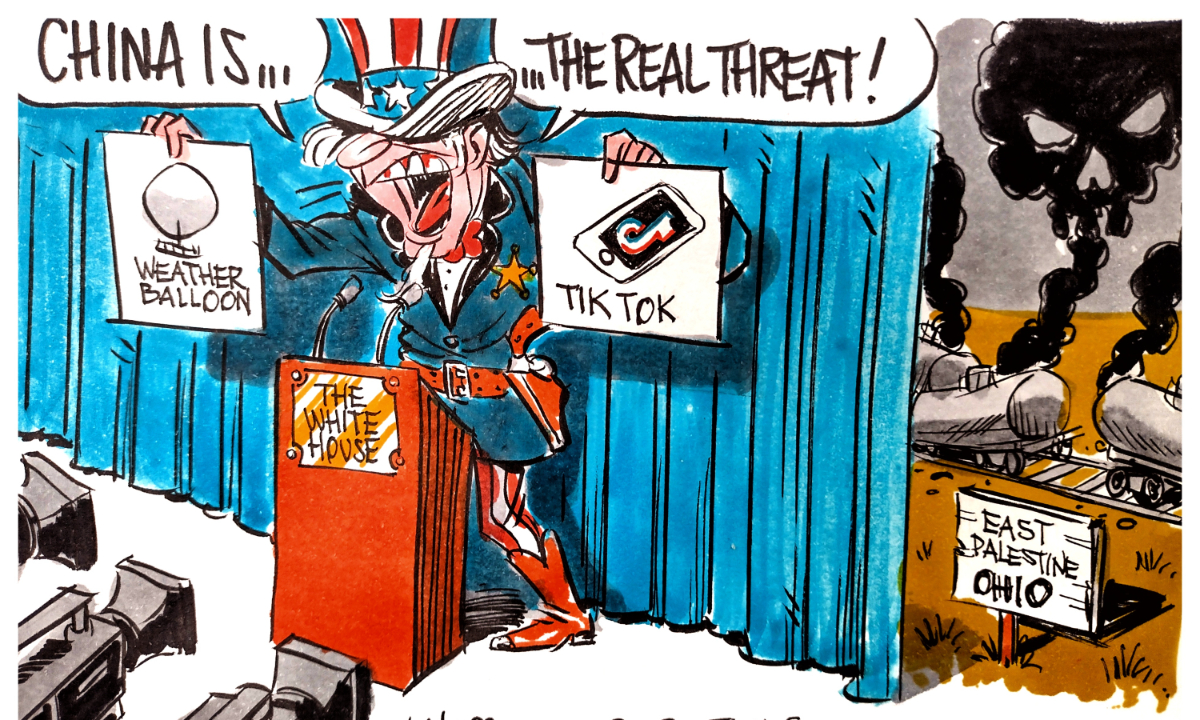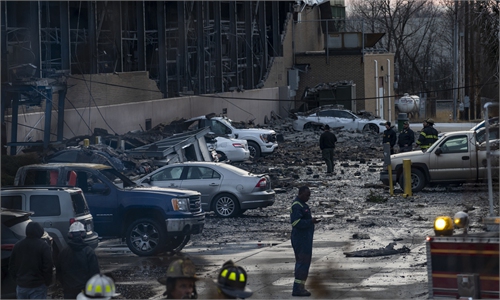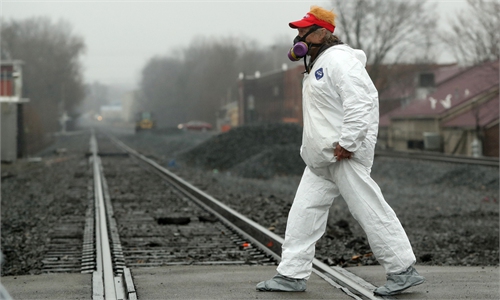Why would the White House bother to care about Ohio? It’s not Ukraine, Russia or China

Is US hyping China threat to cover up Ohio accident? Cartoon: Carlos Latuff
When the Ohio train derailment accident came into public view, it had been more than a week since it happened. While toxic chemicals were spreading over East Palestine, American government officials ignored it, and major US media outlets were weirdly slow to cover the story."Breaking news: Ohio government has filed a constitutional amendment to legally change the Ohio state flag to the Ukraine flag so they can get funding from the Biden administration." People mocked when they found out that President Biden made a surprise visit to Kiev rather than Ohio on American President's Day. "That was the biggest slap in the face," East Palestine Mayor Trent Conaway said. "He can send every agency he wants to, but I found out this morning that he was in Ukraine giving millions of dollars away to people over there and not to us."
US Secretary of Transportation Pete Buttigieg had been silent long after the disaster. When he showed up a week later, the disaster was still out of his sight. "It couldn't be a more exciting time for transportation," Buttigieg said when he introduced Biden's $1.2 trillion infrastructure bill. "It's had its challenges ... Partly because of the pandemic ... Now we got balloons." He still remembered to make a cranky joke about balloons but didn't mention a single word about one of the worst environmental emergencies in decades. Silverado Caggiano, a hazardous materials specialist, said, "We basically nuked a town with chemicals so we could get a railroad open."
In contrast to the collective indifference to the train derailment, the so-called "spy balloon" dominated US media headlines. So how come US media can spot a balloon 40,000 feet high but turn a blind eye to the derailment of 50 train cars? Do they really believe that the "potential threat" of a balloon weighs much more than the release of 1 million pounds of vinyl chloride?
There is no doubt that politicians love to say to the public anything about China's balloons or Russia's threat, but nothing about their failures in overseeing domestic transportation, which has led to poor management. Between 1990 and 2021, there were on average 1,705 train derailments per year in the US, according to data from the Bureau of Transportation Statistics and the Federal Railroad Administration. In 2021 alone, there were 1,627 train accidents, resulting in 8 deaths and 118 injuries.
Under constant lobbying from the industry and stakeholders, the executive and legislative branches of the US have continuously lowered industry standards and relaxed safety regulations on the transportation of dangerous chemicals. The Obama administration issued safety rules in 2015 that significantly loosened regulatory standards for what types of dangerous chemicals could be used and how they could be transported.
A similar derailment in New Jersey in November 2012 that released 23,000 gallons of vinyl chloride prompted actions to further regulate how the rail industry handled shipments of toxic materials. The push eventually led to a law requiring trains carrying toxic substances to be equipped with electronic braking systems. But the Trump administration rescinded the rule, on account of pressure from lobbyists who argued that the change would be costly for railway companies.
Such attention-diverting tricks will sooner or later be exposed. Hyping the "Russia challenge" or "China threat" is never a panacea for the US' problems. It's a cry-wolf game that eventually destroys trust and leaves the shepherd helpless.
The author is a commentator on international affairs, writing regularly for the Global Times, China Daily, etc. He can be reached at xinping604@gmail.com


